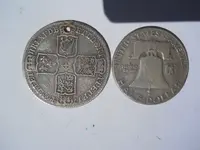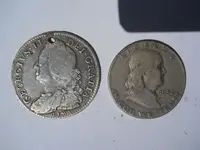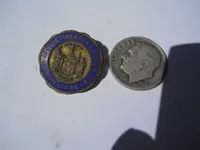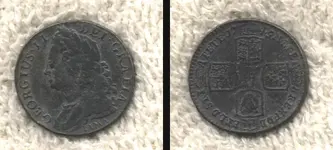gunsil
Silver Member
- Joined
- Dec 27, 2012
- Messages
- 3,863
- Reaction score
- 6,208
- Golden Thread
- 0
- Location
- lower hudson valley, N.Y.
- Detector(s) used
- safari, ATPro, infinium, old Garrett BFO, Excal, Nox 800
- Primary Interest:
- All Treasure Hunting



Found this large Spanish coin years ago and although it is holed and I count it as a jewelry find rather than a coin find, it is my oldest silver. It was dug at a still standing and occupied house yard that was built in 1733. Sadly the site was destroyed years ago in the name of "progress". The half dollar is for size reference. I really like the little pin, love the "keep the babies well" slogan!! Dime is for size reference.
Amazon Forum Fav 👍
Upvote
8




